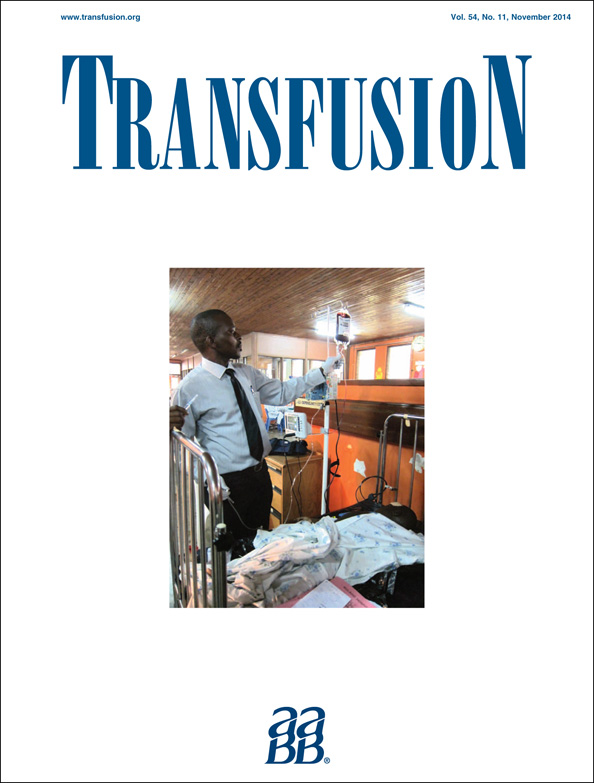Cerebral Doppler velocimetry to predict fetal anemia after more than three intravenous fetal exchange transfusions
Abstract
Background
We aimed to assess usefulness of the middle cerebral artery peak systolic velocity (MCA-PSV) in the prediction of fetal anemia after more than three intravenous fetal-exchange transfusions (IFET).
Study Design and Methods
A retrospective study was conducted over 6 years of 15 consecutive pregnancies with severe red blood cell fetomaternal alloimmunization requiring more than three IFETs. We evaluated correlation between MCA-PSV (expressed as multiples of the mean [MoM]) and pretransfusion hemoglobin (Hb) in the fetus (MoM). Analyses were also performed to assess the value of MCA-PSV to predict moderate to severe fetal anemia.
Results
Twenty-seven MCA-PSV measurements performed before the fourth to last IFET were coupled with pretransfusion Hb in the fetus. The median number of IFETs per fetus was five (range, four to eight). Five Hb samples found fetuses with severe (19%), seven with moderate (26%), and 15 with mild anemia (56%). There was a linear correlation between MCA-PSV(x) and Hb in the fetus(y): y = −0.21x + 0.93 (r = −0.50, p < 0.01). For the prediction of moderate to severe anemia the negative predictive value of MCA-PSV with a threshold of 1.5 MoM was 75%, positive predictive value 73%, specificity 80%, sensibility 67%, and positive likelihood ratio 3.33. The area under the receiver operating characteristic curve was 0.78 (95% confidence interval, 0.59-0.96; p < 0.001). For the prediction of severe anemia, MCA-PSV with a threshold of 1.5 MoM had 94% negative predictive value, 80% sensibility, and a positive likelihood ratio of 2.5.
Conclusions
This study shows that a correlation between MCA-PSV and Hb in the fetus persists even after more than three IFETs. MCA-PSV measurements thus remain useful to monitor fetuses at risk of anemia.




